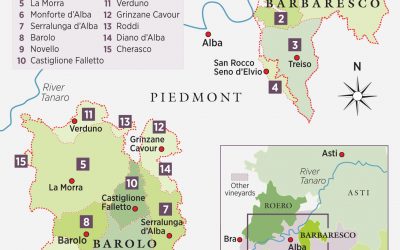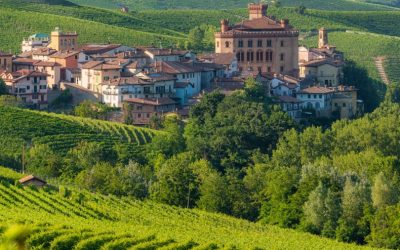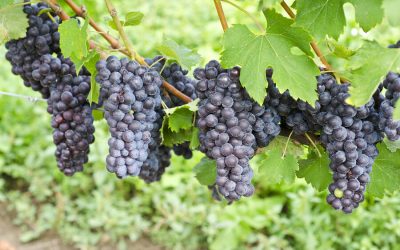Can you drink 2016 Barolo now?
Luca Currado Vietti, the fifth generation of the renowned Vietti winemaking family from Piedmont, Italy, is globally recognized for his superb interpretations of the region’s famous Barolo wines. Known for their excellent cellaring potential, Barolo wines offer exquisite complexity and depth as they age. Yet, the question remains, “How long should you age Barolo wine for?” Let’s delve into the insights provided by Luca Currado Vietti to answer this intriguing question.
Can you drink 2016 Barolo now?
According to Luca Currado Vietti, the answer to this question depends largely on personal preference and the specific vintage. In general, traditional-style Barolos made from the Nebbiolo grape, like those produced at the Vietti winery, are well-known for their extensive aging potential. These wines often require a minimum of 10 years of cellaring from the vintage to truly start showing their complexity and depth, and can easily continue to evolve for another 10, 20, or even 30 years.
However, there are several factors to consider when aging Barolo. The quality of the vintage, the winemaking style, and storage conditions play crucial roles in a Barolo’s aging trajectory. The excellent 2016 vintage, for instance, promises to be a long-lived one, with wines that could continue to evolve and improve over several decades.
Which characteristics do you seek in a Barolo wine?
When selecting a Barolo wine, I look for a blend of power and elegance. This wine is known for its rich flavor profile, with notes of red fruits, tar, roses, and often hints of truffles and spices. I appreciate a Barolo that can showcase these flavors while maintaining balance and complexity.
How much importance do you place on the aging potential of a Barolo wine
The aging potential of a Barolo wine is highly important to me. Barolo wines are known for their exceptional longevity, and they develop beautiful secondary and tertiary flavors as they age. The transformation of a Barolo over time is one of the aspects that makes this wine so captivating.
Do you have a favorite vintage of Barolo, and if so, why do you prefer it?
Choosing a favorite vintage of Barolo is a challenging task, as each vintage brings its unique qualities. However, the 2016 vintage stands out for its excellent balance and structure. These wines are not only impressive in their youth but also have the potential to evolve and improve for decades.
Are you inclined towards traditional-style Barolos, modern interpretations, or both?
I appreciate both traditional and modern styles of Barolo. Traditional Barolos, with their extended maceration and aging in large oak barrels, showcase the power and structure of Nebbiolo. On the other hand, modern styles, which are often aged in small French oak barrels and may have a shorter maceration period, can offer more upfront fruit and softer tannins. Both styles can produce exceptional wines, and it’s always interesting to compare the two.
If you could choose any Barolo to drink right now, which one would it be and why?
If I could choose any Barolo to drink right now, it would be the 2016 Vietti Barolo Rocche di Castiglione. This wine has received rave reviews, and it perfectly exemplifies the balance of power and finesse that makes Barolo so intriguing. The 2016 vintage is one of the best in recent years, and I’m sure this wine would be a stunning example of what the region can achieve.
How long should you age Barolo wine for? with Luca Currado Vietti

The aging potential of Barolo largely depends on the specific vintage and the winemaker’s style, but it’s generally acknowledged that these wines can benefit from extended cellaring. According to Luca Currado Vietti, a renowned winemaker from the Piedmont region, a good quality Barolo can typically be aged for about 10 to 15 years, but in excellent vintages, these wines can evolve and improve for several decades.
Barolo is known for its high tannin levels and vibrant acidity, both of which contribute to its longevity. When young, Barolo can be quite powerful and assertive, but as it ages, it develops more nuanced flavors and aromas. Over time, the tannins soften, and the wine becomes more balanced, offering complex notes of dried fruit, flowers, herbs, spices, and earth.
However, it’s important to remember that not all Barolos are created equal. Some are made in a more modern style, designed to be more approachable in their youth. Others are crafted in a traditional manner, requiring many years to reach their full potential. Therefore, if you’re planning to age a bottle of Barolo, it’s crucial to consider the producer’s style and the characteristics of the specific vintage.
In the case of an exceptional vintage like 2016, these wines have incredible aging potential. Yet, patience is key when it comes to Barolo. While it might be tempting to open a bottle earlier, allowing it to age in your cellar can lead to a much more rewarding tasting experience, as the wine develops and reveals its true complexity and depth.
Conclusion
In conclusion, while it is generally recommended to age Barolo wines for at least a decade or two, the exact timing depends on various factors. Personal taste, vintage quality, winemaking style, and proper cellaring conditions all contribute to the optimal aging period. Luca Currado Vietti’s advice is to open a bottle when it suits your palate and the occasion. However, for those with the patience to wait, a well-aged Barolo offers an unforgettable, profound tasting experience.




